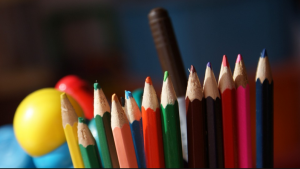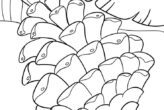The Developmental Benefits of Coloring – Part 2
By Best Coloring PagesFebruary 22nd 2016

Last week, in our first installment of our series, The Developmental Benefits of Coloring, you learned that psychologists, educators, and developmental specialists have determined that there are several developmental-based benefits associated with coloring. These benefits are cognitive, psychological, and physiological in basis. You learned that coloring builds and improves motor skills, coloring aids in coloring awareness and the recognition of colors, and that coloring aids in improving hand-eye coordination. As we continue this series, you will learn about many other developmental advantages associated with coloring.
Coloring Aids in Establishing Boundaries, Building Structure, and Increasing Spatial Awareness
One of the most important concepts that a child learns in their life is that boundaries exist and that they must adhere to them – for their safety and comfort and the safety and comfort of others. When a child colors a page, they are presented with many boundaries and encouraged to stay within those boundaries. In essence, coloring pages present a child with a unified sense of structure. Each coloring activity presented to a kid introduces a wide array of lines, shapes, patterns, and forms. These different characteristics help in building spatial awareness. It may be hard to believe that an act as simple as coloring helps in establishing boundaries, building structure, and increasing spatial awareness, but, it has been proven time and time again by professionals.
Coloring Stimulates Creativity and Encourages Self-Expression
Coloring is an enjoyable activity that stimulates creativity in a child and encourages self-expression. As a child takes a crayon into their hand and puts color to paper, their innermost creative spirit comes out and takes on a life of its own. A child starts to see visual differences in their world and starts to develop an understanding that they may manipulate colors to create those visual differences. The imagination is ignited and the brain is brought to life. Children, by their very nature, are visual creatures. As a child works with various coloring crayons, different paper textures, and hues, they are enthralled by the changes that they are able to make and the art that abounds. This then turns on the reward center of the brain. As a result, they want to express themselves more and more.
Coloring Aids in School Preparation
As a child ages from the preschool years to the years when they are school-ready, they must adapt to many changes. One of these changes is the structure that they will face when they enter the classroom for the first time. Coloring teaches structure and boundaries – as previously mentioned. By taking the time to color, a child will start to adjust to the structure and gain a sense of readiness for all of those paper-based assignments that they will be presented with in the classroom. Coloring helps in many ways when it comes to school preparation.
Thank you for concluding Part 1 and Part 2 of our multi-part series. In these two parts, you have learned several developmental benefits associated with coloring. Next week, you will learn a few more benefits of coloring. If you would like to aid in the developmental progression of your child, we encourage you to download and print out one of our many coloring pages!



